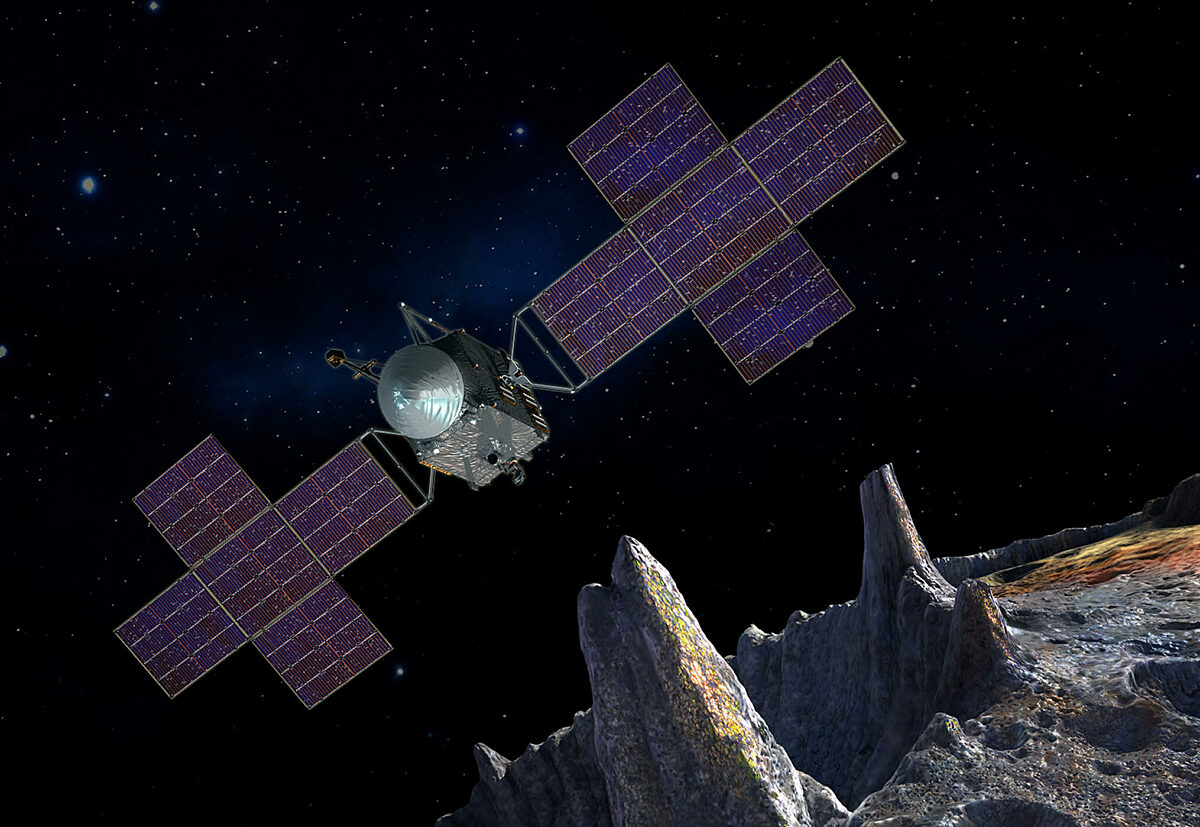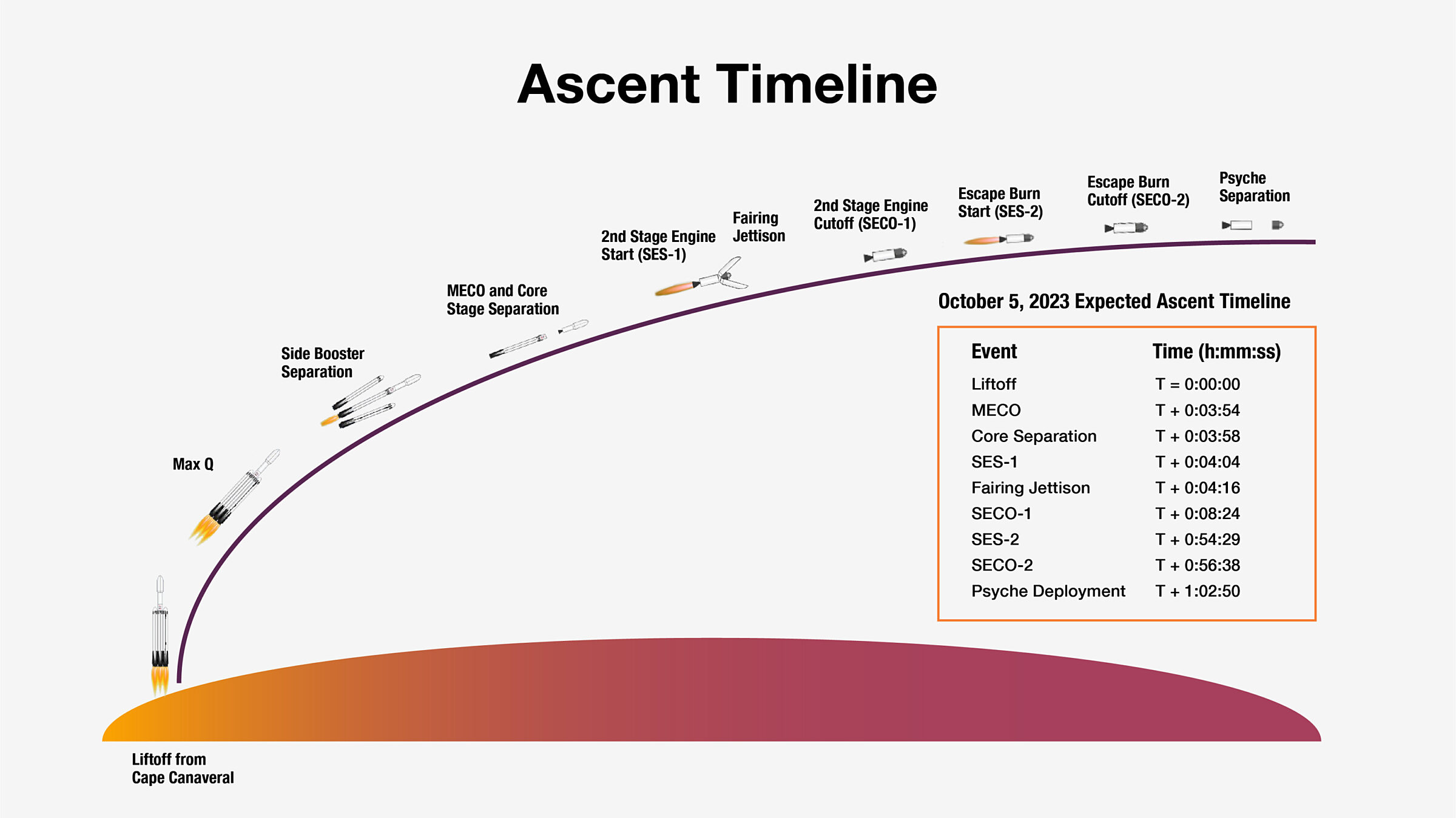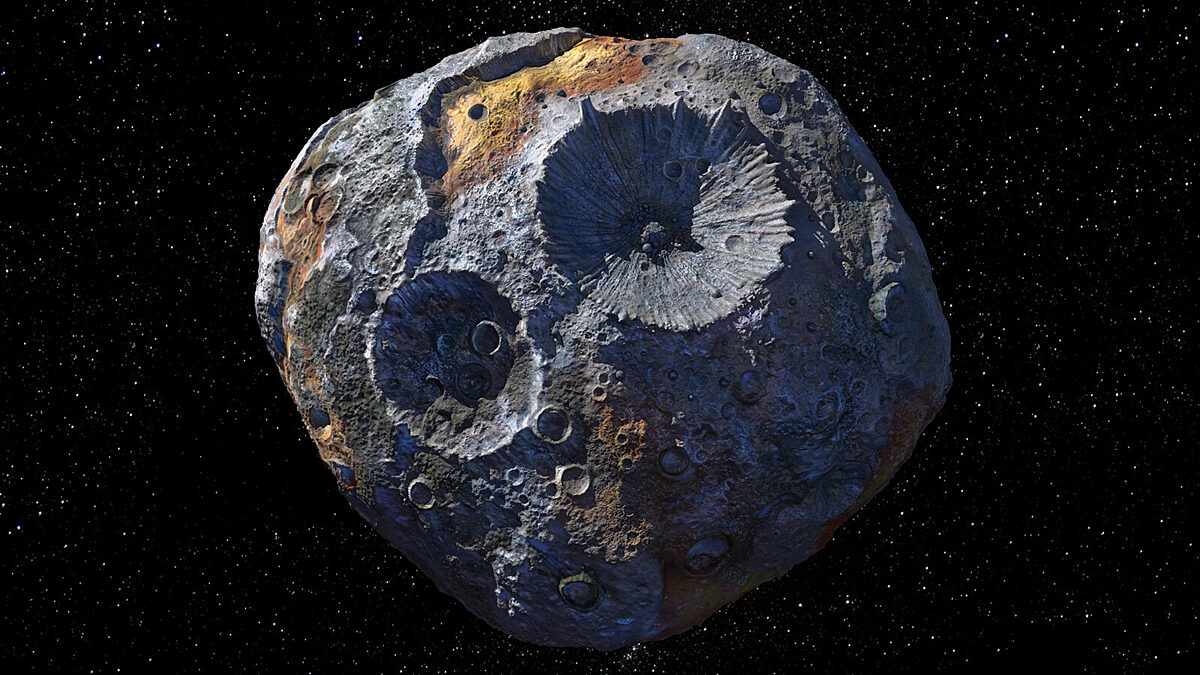Jason Davis • Oct 02, 2023
The Psyche launch and its journey to a metal world: What to expect
A space mission that will reveal the secrets of an asteroid made of metal is almost ready for launch.
NASA’s Psyche spacecraft, bound for the same-name asteroid Psyche, is scheduled to lift off on Oct. 13, 2023 at 10:19 a.m. EDT (14:19 UTC). The launch was originally scheduled for Oct. 5, but the mission team needed extra time to verify parameters used to control the spacecraft’s thrusters.
Psyche will blast off from Kennedy Space Center, Florida atop a SpaceX Falcon Heavy rocket. About an hour after launch, the Falcon Heavy’s upper stage will release Psyche, kicking off a six-year journey to the outer reaches of the main asteroid belt.
Arriving in 2029, Psyche will be the first space mission to study a metal world. The potato-shaped asteroid Psyche is thought to be made of 30% to 60% metal by volume.
Psyche could be the core of an ancient, rocky world that was only partially formed when it collided with other objects and lost its outer shell. In this scenario, the Psyche mission would give us a rare look at a planetary core, which normally lies hidden beneath the surface of a world like our own.
It will be equally interesting if scans determine that Psyche is not a planetary core. Such a finding would mean the asteroid is a new type of object from the Solar System’s early days.
In either case, the Psyche mission is a journey into our past. But before the spacecraft can do any science, it has a journey of its own to complete.

Psyche’s journey to Psyche
Psyche’s launch window runs from Oct. 5 to Oct. 25. The first attempt is scheduled for the morning of Oct. 12. It will take a little more than 8 minutes for Psyche to reach orbit after blasting off from Florida. Still attached to the Falcon Heavy upper stage, Psyche will coast for about 45 minutes before a final two-minute engine burn pushes it out of Earth orbit for good.

Asteroid Psyche is located in the outer reaches of the main asteroid belt, between Mars and Jupiter. The Psyche spacecraft will get there using a solar electric propulsion system that provides a weak but continuous push. NASA says the force from Psyche’s engines is equivalent to the force you feel from the weight of a AA battery in the palm of your hand.
Psyche will also get a boost from a Mars gravity assist in May 2026. It will arrive at asteroid Psyche in August 2029.

At Psyche, the Psyche spacecraft will observe the asteroid from four different orbits, which are labeled A, B, C, and D. The A orbit is the highest, at 709 kilometers (441 miles), and the D orbit is the lowest, at 75 kilometers (47 miles).
Due to changing amounts of sunlight as asteroid Psyche orbits the Sun, spacecraft Psyche will not visit each orbit from highest to lowest. Instead, it will use the order A, B1, D, C, and B2. (The B1 and B2 orbits both refer to orbit B.)
Psyche will orbit the metal world for at least 26 months. Mission operations are currently scheduled to end in November 2031.

Science
The Psyche spacecraft consists of a cubic core unit measuring 2.2 meters (7.1 feet) wide and 2.4 meters (7.8 feet) deep. Two sides of the core are connected to large, five-paneled solar arrays. With both solar arrays deployed, the entire spacecraft is roughly the size of a singles tennis court, NASA said.
Psyche is equipped with three science instruments to help it unpack the secrets of its namesake asteroid:
Magnetometer: The magnetometer will look for signs of a past magnetic field, which would be strong evidence that Psyche formed from a liquid metallic core similar to ones found within rocky planetary bodies like Earth.
Gamma ray and neutron spectrometer: As cosmic rays and high-energy particles hit asteroid Psyche’s surface, elements there emit gamma rays and neutrons. Psyche’s spectrometer can detect these emissions and match them to known elements, enabling scientists to determine the elements that make up Psyche’s surface.
Multispectral imager: Psyche has two identical cameras that can image Psyche’s surface in different wavelengths of light, including visible and near-infrared wavelengths. This will help us determine Psyche’s mineral composition, map surface features, and create 3D surface maps.
Psyche’s communication system doubles as a fourth science instrument. By analyzing radio waves from the spacecraft, we can determine how the asteroid’s gravity is tugging on the spacecraft. This allows scientists to calculate several key factors about asteroid Psyche, including rotation rates, mass, and gravity field, which gives us insight into the asteroid’s interior.
Psyche is also carrying a technology demonstration not directly related to the mission: the Deep Space Optical Communications (DSOC) experiment. The DSOC is a near-infrared laser communications system that aims to send high-bandwidth data over long distances. DSOC tests are scheduled to take place between November 2023 and October 2025, as the spacecraft travels to Psyche.
Revealing Psyche
Psyche was discovered in 1852 and named after the Greek goddess of the soul. The potato-shaped world measures 280 kilometers (173 miles) long and 232 kilometers (144 miles) wide, making it about the size of the U.S. state of Massachusetts (minus Cape Cod). A day on Psyche lasts just 4 hours and 12 minutes, while a year lasts about five Earth years.
Using optical and radar imaging, scientists have been able to develop a shape model for Psyche. The model points to what may be two crater-like indentations on the surface, which are usually shown in artist’s concepts.
Because of Psyche’s high metal content, crater rims there may have sharp edges and towering spires, giving the asteroid a decidedly sci-fi look. To get a better idea of how these craters might form, scientists fired projectiles into iron ingots and real meteorites, creating metallic craters that might be found on Psyche.
No one knows for sure what Psyche will look like up close. The strange metal world will be waiting patiently to show us its secrets when the Psyche mission arrives in 2029.


 Explore Worlds
Explore Worlds Find Life
Find Life Defend Earth
Defend Earth


